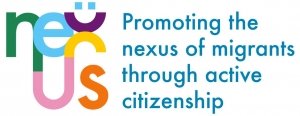FAIRE BXL SAMEN / MAKE BRUSSELS TOGETHER
Faire BXL Samen is an umbrella initiative for an array of citizen e-participation projects within the City of Brussels, that include (but are not limited to) participatory budgeting, collaborative renaming of streets in Brussels, and creating a citizens panel for a new tram.
Tool Self-Assessmet
- Reflect back on the objective of the tool you built: did you exceed it, or fall short? If so, why?
The purpose of this initiative is to make it possible for the City of Brussels to allow its: formal decision makers, citizens, and association to come together and take part in sharing innovations and suggesting development ideas for the city. On the whole “FaireBXLSamen” can be seen as a successful case. The City of Brussel’s has announced a long-term commitment to the project itself as well as to citizens’ participation and to developing public/urban management via digital tools. The platform’s easy-to-navigate structure and overall user friendliness contributed to the success of this tool.
- What are the tools’ metrics for success and what does metric say – how well did the tool do?
Overall, the tool was successful. Regardless of some shortcomings and imperfections, the tool is still characterised by several strengths such as its use-friendly interface, the diversity of participation methods and topics it covers, and its initiators’ motivation to keep it functional and continue with its development.
It is very difficult to cross-reference these figures with the profile of the people behind them; and with the RGPD law this becomes almost impossible as our current provider refuses to take a set of user profile data; these statistics are not enough relevant to measure the real impact of a process through this kind of tool (digital platform);
We notice that in the voting phases for a process of choice of projects, the numbers increase strongly: there are certainly two reasons for this: first, a network game between people which influences upwards this participation (thus the importance of proximity between people to make known a process), then these phases are at the same time simple (require little involvement to the users) and maybe a larger number of people feel concerned;
We note that there is no collaboration between the various contributors; there is sometimes support (“like’s”) but once again, we note with more certainty here that this is the result of networks of influence of one or other contributor who relays his contributions in his network.
- Were your assumptions that the tool you built would: increase participation/engagement or tackle an issue/raise awareness correct?
Yes, to an extent. The tool did increase participation and raise awareness, however there was a limited response from society regarding the project. This limited response is reflected in the number of participants using the platform. The demographic profile of the participants have not met the expectations of the organisers. The city of Brussels have become more motivated to use the platform further and further develop e-tools focused on the involvement of citizens in public administration. There is, however, a challenge to getting participants to continue to use the platform due to the fact that “FaireBXLSaemn” covers lots of different kinds of projects with different kinds of target audiences. If the subject of a new project does not interest the existing user base, they will not participate even if they have participated in the past. When it comes to totally different topics, the participant must start from zero every time. So participation and continued participation is dependent on the participants motivation.
- Do you think you chose the right approach – and what would you do differently?
FaireBXLSamen is an umbrella project – several sub-projects under one big project. There are several things that would be done differently with this online platform: (1) increase communications and advertising campaigns to reach a wider audience, (2) create a mechanism for collecting participants’ feedback of the online platform
- What are you hearing from users? What do they enjoy in tool? What do they find challenging?
The online platform is relatively user friendly, advanced IT skills are not required for its effective use. The platform’s landing page is simple and built around access points to sub-sections that are focused on the different project neighborhoods and projects that FaireBXLSamen covers. Navigation of the platform is straightforward and the platform is available in French and Dutch taking into consideration both the official languages of Brussels.
The platform does not have a feedback section to receive direct feedback from participants about the tool. The users found the red/green colour scheme of the platform challenging to process and read (as an example the use of red text on green background).
- Did your tool deliver what you were hoping for? Are they useful for your key user audience? Are they being adopted?
The online platform has provided new possibilities for citizens to interact with decision makers. The online platform has also contributed to citizen education. The ideas discussed or proposals submitted through this online platform are incorporated into the policy outcome in most cases.
When evaluating where the case increased the public sector’s readiness to implement e-Participation in decision making processes, the results are positive but more could be done.
- What worked well through the implementation process? What areas have room for improvement?
These are the areas in need of improvement: 1. Increase direct interaction or deliberation between participations by adding a comment section or another feature that would allow for direct participant-to-participation interaction, 2. Platform does not regularly collect feedback on participant satisfaction, this is something that should be implemented in all e-participation processes.
Tool ID
- GOAL:Citizens’ engagement in decision making process
- Made by:City of Brussels
- Country:Belgium
- YEARS ACTIVE:2017 – to date


